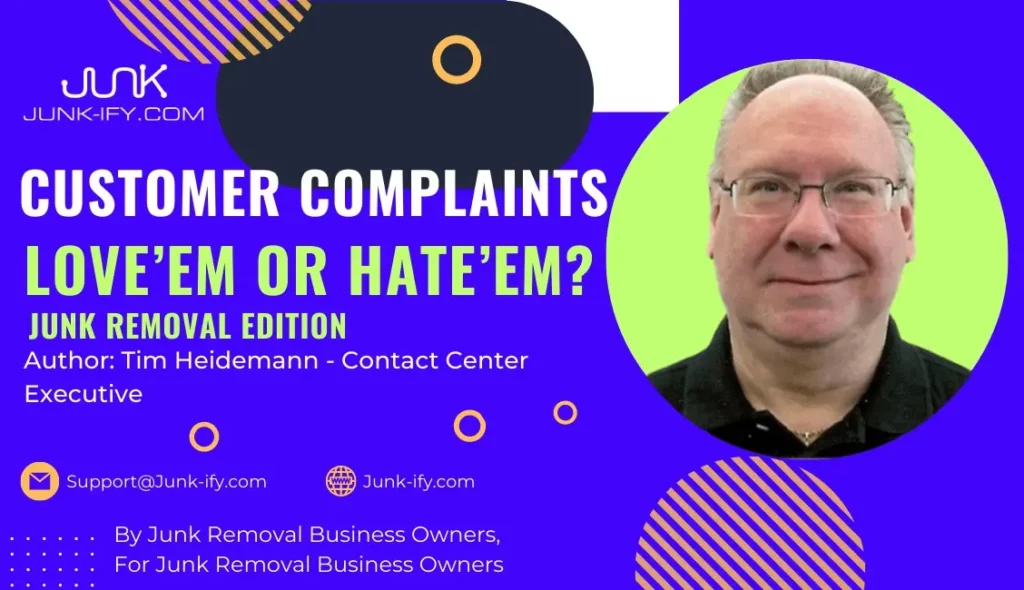In the junk removal business, pricing is one of the critical factors that every business owner should pay close attention to. It is more than just numbers and price brackets. It is essential to develop a pricing strategy that is not only profitable but also competitive. In this article, we will explore the process that junk removal companies can follow to build a pricing list that works for their business.
- Don’t copy your competitor’s price list
Many people assume that copying your competitor’s pricing strategy is a good idea. However, this is not the case in the junk removal business. Your cost of goods sold (COGS) is different from your competitors, which makes it difficult to come up with the same pricing strategy. Therefore, you should develop a pricing strategy based on your own COGS.
2. Conduct Market Research
Conducting market research is an essential step in building a pricing list. It is important to identify the demographics of the area where you will be operating. This will help you determine if people can afford your services. There are free tools available to help you with market research, or you can invest in paid tools to get more granular information.
3. Set your prices based on load percentages
To set your prices, you can use the load percentages based on the full truckload price. The breakdown should be as follows:
- 25% – Single Item Removal
- 30% – 1/8 Truck Load
- 41% – 1/6 Truck Load
- 58% – 1/4 Truck Load
- 66% – 1/3 Truck Load
- 72% – 3/8 Truck Load
- 77% – 1/2 Truck Load
- 80% – 5/8 Truck Load
- 85% – 2/3 Truck Load
- 88% – 3/4 Truck Load
- 92% – 5/6 Truck Load
- 97% – 7/8 Truck Load
- 100% – Full Truck Load
4. Calculate your cost of goods sold (COGS)
To determine how much it costs you to provide your service, you need to calculate your cost of goods sold (COGS). This includes all the direct costs incurred in producing your junk removal service. For example, payroll and taxes, fuel fees, disposal fees, customer acquisition costs, truck leases, insurance, etc. You want to find out how much it costs you to fulfill the service.
5. Do step #4 for all your price brackets
Once you have calculated your COGS, you need to do step #4 for all your price brackets. This will give you the cost of providing each service, which you can use to determine the appropriate pricing.
6. Apply the Gross profit margin formula
To calculate your gross profit margin, use the formula: GP = [Sales Revenue] -[CAC ] – [COGS ] (CAC: Customer Acquisition Cost >> total $ spent / new client’s, basically how much it cost to get a new client). Apply this formula to each price bracket.
7. Set an average Gross Profit Margin
The aim is to set an average gross profit margin that makes sense with your business financials. Always aim for a gross profit margin of more than 50%. This is an acceptable benchmark for a healthy junk removal business.
8. Adapt your pricing from an “Even to an Odd Pricing Model.”
Pricing psychology is an essential factor to consider when building a pricing list. Studies have shown that buyers are more sensitive to certain ending digits. Therefore, leverage the odd pricing model by adapting your pricing to end with the number “7”. For example, instead of pricing at $290, the price at $297.
9. I calculate the average gross profit for each price bracket.
10. I set something up that I call “the special price list” essentially, that’s just the lowest price I can go in case clients ask for discounts and where I can still be in profit.
I always Remember when I’m about to lose a job all I’m thinking is multiple ways to liquidate my cost per acquisition first and on top of that understanding that I’m (-$) negative in front of the client already so it makes sense to me thinking in ways of not losing the client.
So this procedure. It’s similar to the one I stated above but targeting a Gross Profit > 40%.).
(This “special price list” is for my internal operation manager’s information so they know how low we can go and still be in profit so that they don’t just throw a significant discount without knowing the numbers first, it basically gives you a great room between the client’s desired price and your minimum price so you can leverage the negotiation process in your favor if only IF it makes sense ).
11. I ensure that my regular and special price lists both have a gross profit margin of over 40% on average. (40%> is the goal)
12. I test, tweak, and repeat my pricing to find the “perfect spot” between affordability and profitability.
I hope this helps you build your junk removal pricing structure✊🏻🔥







